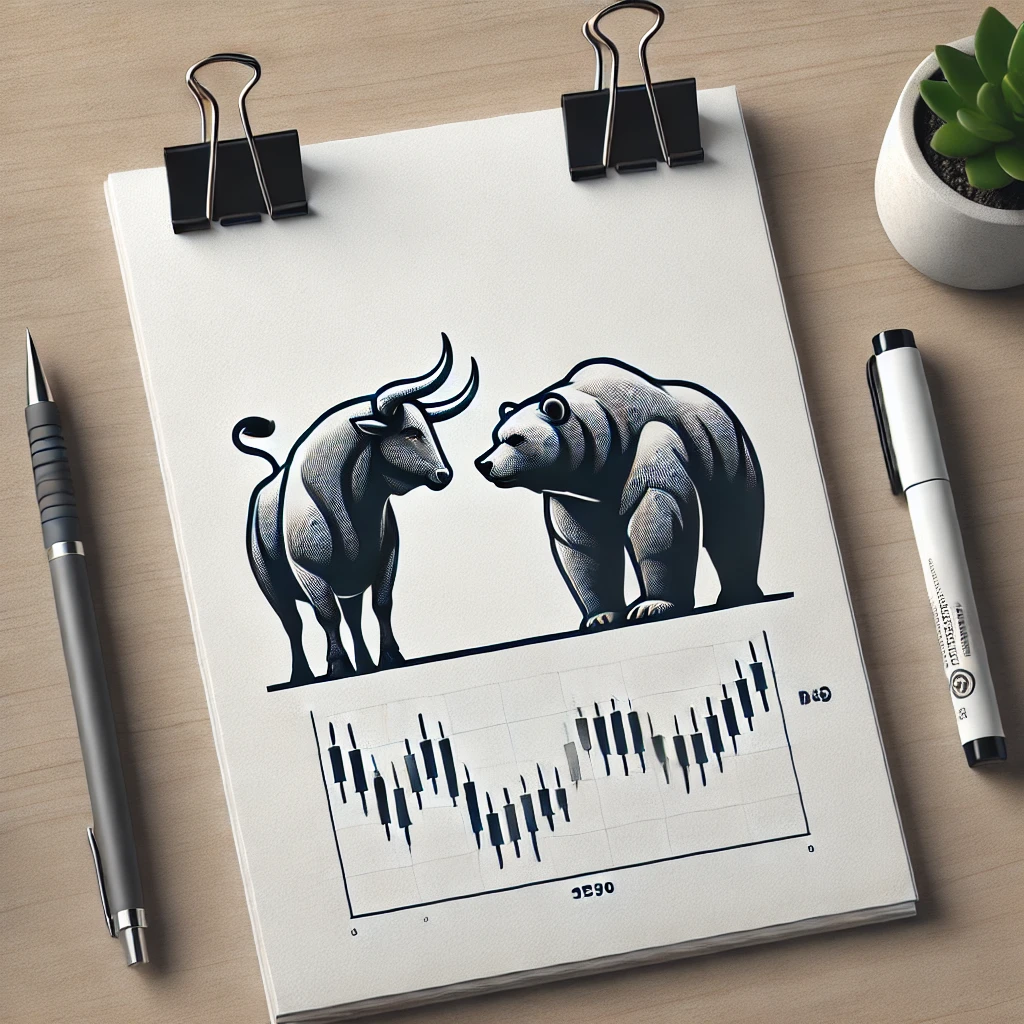Investing Terms for Beginners: A Guide to Understanding the Market

So you’ve decided to invest, but now you’re drowning in weird words like ETFs, dividends, and bull markets. Don’t worry—I’ve got you covered. This guide will break down the must-know investing terms in a way that actually makes sense (and doesn’t bore you to death).
By the end, you’ll talk stocks, portfolios, and returns like you’ve been on Wall Street for years—minus the stress and expensive suits.
Bull Market vs. Bear Market
Bull Market = Prices Going Up
Bear Market = Prices Going Down
Wall Street loves animal metaphors. In a bull market, stock prices are rising, investors are happy, and your portfolio is growing. In a bear market, stocks are falling, people panic, and Twitter (or X, I suppose) fills with “the economy is crashing!” tweets (are they still called tweets? Sheesh).
Pro Tip: Long-term investors don’t fear bear markets. They see them as a chance to buy stocks at a discount.
Capital Gains & Taxes
Every time you sell a stock for a profit, you make capital gains – which Uncle Sam taxes.
Short-Term Capital Gains: Stocks sold in less than a year are taxed at your income tax rate (up to 37%!).
Long-Term Capital Gains: Stocks held over a year are taxed at a lower rate (0-20%)
- Hold investments longer to avoid high taxes.
Dividends
Some companies pay their investors cash just for holding their stock. Instead of reinvesting profits into growth, they share the earnings with stockholders. This is typically paid out every quarter.
ETFs (Exchange Traded Funds)
An ETF is like a basket of stocks. Instead of buying one company, an ETF lets you invest in dozens (or hundreds!) at once. For example, the S&P 500 ETF is a basket of 500 of the biggest U.S. companies. A Tech ETF would be a basket of companies like Apple, Google, Microsoft and other tech stocks. ETF’s reduce risk because if one company tanks, the others balance it out.
Market Orders vs. Limit Orders
When buying a stock, you can place two types of orders. The first is a market order. With a market order, you buy the stock immediately at the current price. Alternatively, there is also a limit order. With a limit order, it buys the stock only if it drops to a certain price that you set. For example, if Tesla’s stock is currently $200 and you place a market order, you’ll buy it right away at $200. But, if you place a limit order for $190, the system will wait until the price drops to $190 before buying. There are reasons for both and there are articles on this site to explore them deeper.
P/E Ratio (Price to Earnings Ratio)
The P/E ratio helps determine if a stock is overpriced, underpriced, or just right. If a company has a High P/E ratio it is considered an expensive stock. Investors might expect high growth. If it has a Low P/E ratio, it is considered a cheaper stock and might be undervalued. When looking at these, always compare a competitors P/E ratio. You do NOT want to compare companies that are not related. This can help you determine if a stock is overvalued or undervalued in its segment.
Portfolio Diversification
Diversification is spreading your money across different stocks, ETFs, and assets so you don’t lose everything if one crashes. A risky portfolio might be having 3 stocks all in the tech sector. But a generally less risky portfolio would be stocks spread across multiple markets such as tech, healthcare, real estate, etc. You’ve probably heard the saying 100 times, “Don’t put all your eggs in one basket.”
Risk Tolerance
Risk tolerance is how much volatility (ups and downs) you can handle. Are you cool undeer pressure, or do you freak out when the market dips 2%? If you have high risk tolerance, you are ok with big swings and tend to invest in growth stocks. If you have low risk tolerance, you might prefer slower steady gains. These could be in the form of ETF’s, bonds, and dividend stocks.
Stocks
Stocks (or shares) represent ownership in a company. When you buy stock in Apple, you literally own a tiny piece of Apple. If the company grows, your shares increase in value. If it flops, well… your money goes poof.
